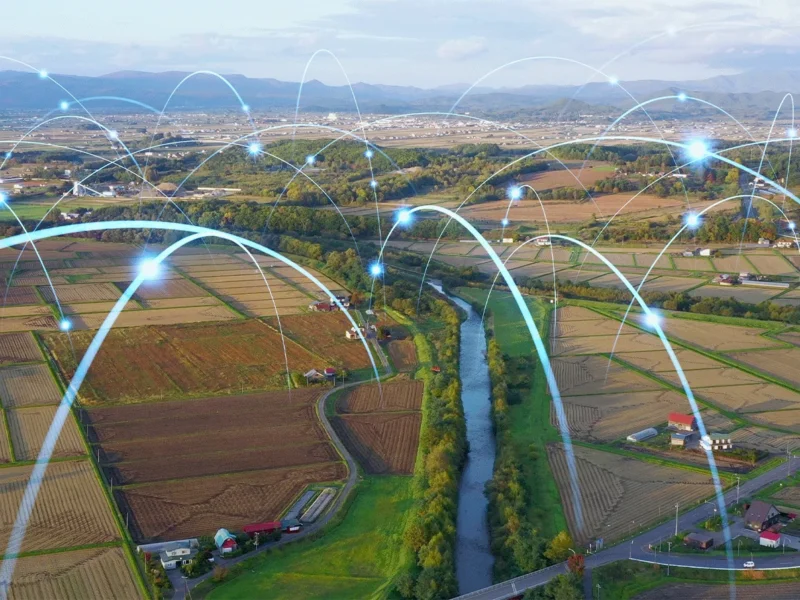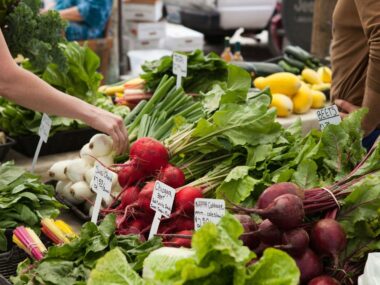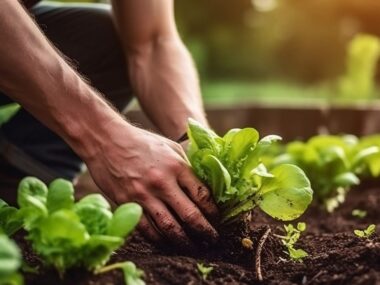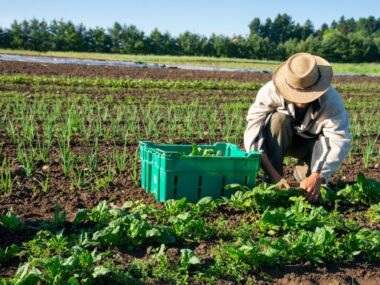In recent years, the agricultural sector has witnessed a rapid transformation driven by technological advancements. These innovations are revolutionizing traditional farming practices, enhancing efficiency, sustainability, and productivity. From precision agriculture to drones and artificial intelligence (AI), this article explores some of the most groundbreaking technological innovations that are shaping the future of agriculture.
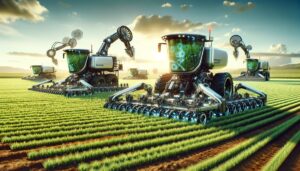
1. Precision Agriculture
Precision agriculture, also known as precision farming or satellite farming, involves the use of technology to optimize crop yields and minimize inputs such as water, fertilizer, and pesticides. By leveraging data analytics, GPS technology, and remote sensing, farmers can make informed decisions tailored to specific areas of their fields.
Key Components:
- GPS Guidance Systems: GPS technology enables farmers to precisely map their fields and track the location of equipment, ensuring accurate planting and harvesting.
- Remote Sensing: Drones and satellites provide real-time data on crop health, soil moisture levels, and pest infestations, allowing farmers to detect problems early and take timely action.
- Variable Rate Technology (VRT): VRT enables farmers to apply inputs such as fertilizer and irrigation water at variable rates across different parts of the field, optimizing resource use and minimizing waste.
Benefits:
- Increased Efficiency: Precision agriculture allows farmers to apply inputs more efficiently, reducing costs and environmental impact.
- Improved Yields: By optimizing inputs and addressing issues promptly, precision agriculture can increase crop yields and overall farm profitability.
- Sustainability: By minimizing inputs such as water and chemicals, precision agriculture promotes environmental sustainability and reduces the carbon footprint of farming operations.
2. Agricultural Robots and Automation
Advances in robotics and automation are revolutionizing labor-intensive tasks in agriculture, ranging from planting and harvesting to weeding and crop monitoring. Agricultural robots, also known as agribots, are designed to perform specific tasks autonomously or with minimal human intervention.
Key Technologies:
- Harvesting Robots: These robots use machine vision and robotic arms to identify and harvest ripe fruits and vegetables with precision and efficiency.
- Weeding Robots: Autonomous robots equipped with cameras and AI algorithms can identify and remove weeds without the need for herbicides, reducing chemical usage and labor costs.
- Autonomous Tractors: Self-driving tractors equipped with GPS and sensors can perform field operations such as planting, tilling, and spraying with precision, freeing up farmers’ time and resources.
Benefits:
- Labor Savings: Agricultural robots reduce the need for manual labor, particularly for repetitive and physically demanding tasks, addressing labor shortages in the agriculture sector.
- Increased Efficiency: Robots and automation technologies can perform tasks with greater speed, accuracy, and consistency compared to human labor, resulting in higher productivity and farm profitability.
- Reduced Environmental Impact: By minimizing chemical usage and soil compaction, agricultural robots contribute to environmental sustainability and promote soil health.
3. Vertical Farming
Vertical farming is a method of growing crops in vertically stacked layers, often in controlled indoor environments such as warehouses, shipping containers, or urban high-rises. This innovative approach maximizes space utilization and allows for year-round production in any location, regardless of climate or season.
Key Components:
- Hydroponics: Vertical farms often use hydroponic systems, which involve growing plants without soil by using nutrient-rich water solutions.
- LED Lighting: Energy-efficient LED lights provide the necessary spectrum for plant growth, enabling vertical farms to optimize light exposure and promote photosynthesis.
- Climate Control Systems: Vertical farms are equipped with climate control systems that regulate temperature, humidity, and airflow to create optimal growing conditions.
Benefits:
- Space Efficiency: Vertical farming maximizes land use by growing crops in stacked layers, making it ideal for urban areas where land availability is limited.
- Year-Round Production: Controlled indoor environments allow for continuous crop production regardless of seasonal variations or climate conditions, ensuring a consistent food supply.
- Resource Efficiency: Vertical farming uses less water and land compared to traditional agriculture, and it minimizes pesticide use by providing a controlled environment that reduces pest pressure.
4. Blockchain and Smart Farming
Blockchain technology, which allows for secure and transparent transactions without the need for intermediaries, is being increasingly utilized in agriculture to improve traceability, supply chain management, and food safety. Smart farming, also known as digital farming or agtech, involves the integration of technology into agricultural practices to monitor and manage crops, livestock, and resources more efficiently.
Key Technologies:
- Blockchain: Blockchain-based platforms enable farmers to record and track every stage of the production process, from planting and harvesting to distribution and sale, ensuring transparency and traceability.
- Internet of Things (IoT): IoT devices such as sensors, drones, and wearable devices collect real-time data on environmental conditions, crop health, and livestock behavior, allowing farmers to make data-driven decisions and optimize resource use.
- Artificial Intelligence (AI): AI algorithms analyze large datasets to provide insights and predictions on crop yields, disease outbreaks, and optimal planting times, helping farmers maximize productivity and profitability.
Benefits:
- Transparency and Traceability: Blockchain technology enables consumers to trace the origins of food products, ensuring food safety and promoting trust in the agricultural supply chain.
- Data-Driven Decision Making: IoT devices and AI algorithms provide farmers with actionable insights and recommendations, enabling them to optimize resource allocation, minimize risks, and improve farm management practices.
- Sustainable Agriculture: Smart farming technologies promote resource efficiency, environmental sustainability, and resilience to climate change by enabling precise monitoring and management of crops, livestock, and resources.
5. Biotechnology and Genetic Engineering
Biotechnology and genetic engineering play a crucial role in agriculture by developing crop varieties with desirable traits such as pest resistance, drought tolerance, and improved nutritional content. Genetically modified organisms (GMOs) are created by altering the genetic makeup of plants or animals using biotechnological techniques.
Key Technologies:
- Genetic Modification: Genetic engineering techniques such as CRISPR-Cas9 enable scientists to precisely edit the DNA of crops to introduce beneficial traits or enhance existing ones.
- Biofortification: Biofortification involves enhancing the nutritional content of crops by increasing the levels of vitamins, minerals, and other micronutrients through genetic engineering.
- Pest and Disease Resistance: GMOs can be engineered to resist pests and diseases, reducing the need for chemical pesticides and promoting sustainable pest management practices.
Benefits:
- Improved Crop Yields: GMOs with traits such as pest resistance and drought tolerance can increase crop yields and reduce yield losses due to pests, diseases, and environmental stresses.
- Enhanced Nutritional Content: Biofortified crops can help address malnutrition and micronutrient deficiencies by providing essential vitamins and minerals in staple food crops.
- Reduced Environmental Impact: GMOs can contribute to environmental sustainability by reducing chemical usage, conserving water, and promoting soil health through sustainable farming practices.
Conclusion
Technological innovations are revolutionizing agriculture, enabling farmers to produce more food with fewer resources while minimizing environmental impact and promoting sustainability. From precision agriculture and agricultural robots to vertical farming and blockchain-based supply chain management, these innovations are transforming every aspect of the agricultural value chain. By embracing technology and innovation, farmers can overcome challenges such as climate change, resource scarcity, and population growth, ensuring a secure and sustainable food supply for future generations. As technology continues to advance, the possibilities for innovation in agriculture are
